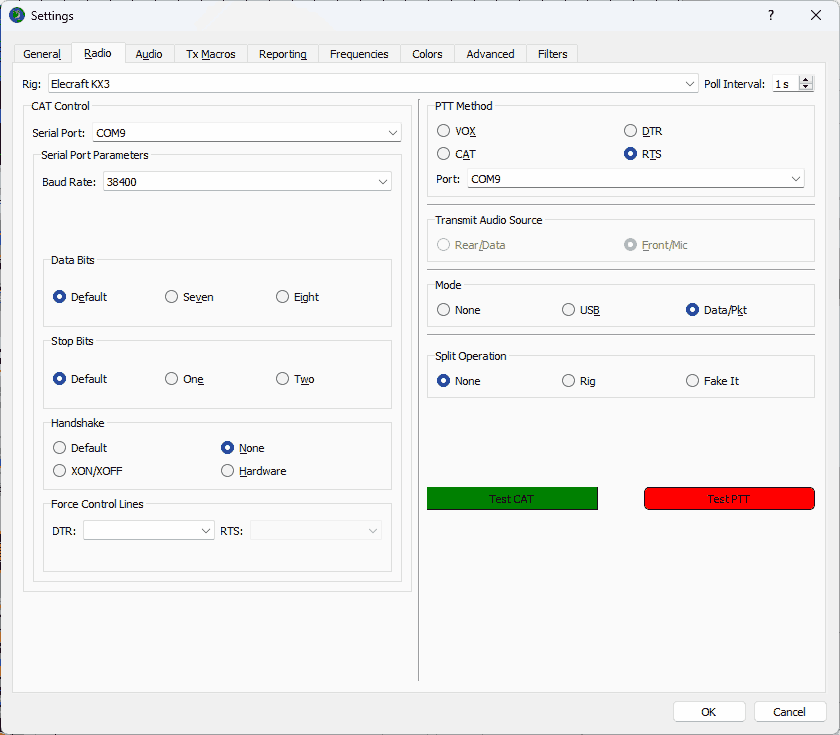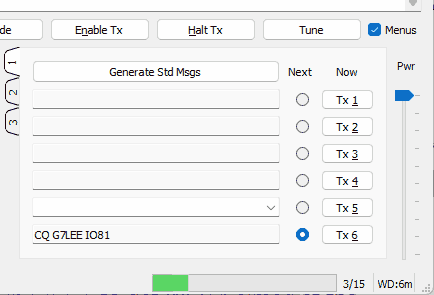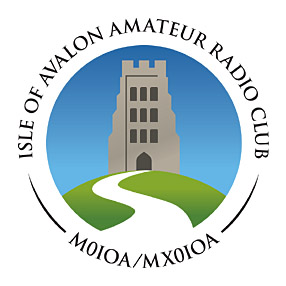A SOTA digimode station using the KX3 and xggcomms Digimode-4-USB
I run digimodes at home using a FT897, but remotely in a shed up the garden, using a Raspberry Pi4 to run WSJT-X or FLdigi. In the beginning I used a separate CAT USB interface from TechnoFix UK and a G4ZLP MiniProSC audio interface.
Absolutely nothing wrong with that solution, but it was two USB cables and a rat’s nest when it came to using the rig elsewhere. I switched to using a xggcomms digimode-4 USB interface, which combines CAT rig control and audio interfaces.
I was tempted to try SOTA digimodes on HF, because I don’t grok Morse in any useful manner. Nowadays you’d probably get an Icom 705 which has a direct USB interface for audio and CAT rig control, but my portable rig is an Elecraft KX3, where you interface at audio level the old-fashoned way.
I looked at adding a bluetooth keyboard to the Pi, and an adequate 12V power supply, and the Pi screen, and the USB CAT interface, and the ZLP. It was all far too many bits and bobs, a collection of parts flying in loose formation. OK on a bench but too many things to get right in the field. What I wanted was an xggcomms Digimode-4 for the KX3, but xggcomms didn’t have one for the KX3 at the time.
I did consider making up cables from the FT897 mini-DIN plugs to break out to several jacks. But I’d then have to rip up my shack setup, and those DIN plugs are fiddly at the best of times. I asked xggcomms if they could do the KX3, and Steve from xggcomms kindly made one up for me to try. That was worth asking, as Steve had to tweak some things for the KX3. In particular, the KX3 requires an exceptionally low value on the PTT line1 at < 0.3V, although it doesn’t draw a lot of current.
simplify
The xggcomms digimode-4 combines the CAT serial transceiver control with an audio interface, one USB plug to rule them all. You can’t forget the cables as it has captive cables to the USB and rig end connectors, unless you forget to take the interface. That simplicity is valuable in a temporary install ;)
The computer is an old HP Stream running xubuntu. This only has two USB ports, one for the digimode 4 interface, and the remaining port is good for the USB GPS dongle. gpsd sorts out the time reference without wrangling phones and internet in the field.
sudo cgps -s
in a terminal window will also give you the grid square. There would be something nice about WSJT-X picking up both location and time from GPS on a system with gpsd, but you can’t have everything.
Unlike the Pi, this is a single-box with battery and keyboard integrated
use hardware PTT control
The CAT interface usually supports PTT control, but if you miss the PTT-off because you have RF in the shack from a less than ideal antenna it all too easily ends up stuck in Tx. SOTA ops often use antennas like the EFHW that can have RF on the coax if set up imperfectly, so they can have the same sorts of problems although they run lower power. I use the FT897 remotely via VNC, and learned the hard way that hardware PTT was A Good Thing.
There are two ways of doing it - one is to use an audio interface like the G4ZLP and set FLdigi or WSJTX to put out a tone2 on the RH channel which is then used to key the Tx via the MiniPro SC. The other way is to use the use the RTS line of the serial port to key PTT, which is the method favoured by the Digimode-4-USB. WSJTX and FLdigi support that too. It’s worth setting the CAT port handshake to none, because if you set it to hardware the the RTS will be asserted in a request to send, for things like changing frequency on the rig, and will cause much puzzlement.

Make sure WSJTX settings:radio tab is set to use Data/Pkt mode rather than USB.

This gets translated to ‘Data A’ in KX3 speak. This makes the KX3 set to line levels and turns off compression and noise reduction, and widens the Rx bandwidth.
If it goes well you can press the test CAT and it will go green, and you can press Test PTT and it should go red and the red TX LED will light up on the rig (no audio is sent so there is no RF power out). I had to bump the computer after taking handshake off default to none for the TX LED to come on. This on Windows, which is where many people will run WSJT-X, although I don’t because the HP Stream and the Pi are on Linux, where you have a different set of minor tribulations in setup. Audio in particular is often grievous on Linux, with so many audio subsystems available. However, on Raspbian Bullseye and Xubuntu the audio just worked, to my surprise.
setting drive levels
XGG have a page on setting up WSJTX to get WSJTX aimed at the interface and talking to the rig and setting PTT.
The Elecraft KX series of rigs are oddball when it comes to setting TX level compared to nearly everything else. Page 18 of the KX3 manual tells you

which looks like this

You set the output power on the rig itself. Section 4.4 of the FT8 Hinson tips describe the procedure. Unlike most rigs you can’t control Tx power by dropping audio levels, this may get into a fight with the KX3 ALC. Set the FT8 Tx power (and tune, if you need to use that) slider flat out, adjust the KX3 ‘mic’ control to ~5, and fine tune as per Hinson tips using the PC’s volume control for the USB interface.
You can then use the KX3’s power control to adjust power, and the ALC will stay the same3. I substantiated this experimentally comparing 12W RF out and 0.5W, the KX3 ALC showed exactly the same.

For receive levels I set the AF gain on the KX3 to ~20 and then adjust the software mic gain slider on the USB interface to make WSJTX happy, showing green on the display.
testing
Unfortunately the run of fine weather we have had recently ended as I was writing this, so I haven’t been able to try it out on Beacon Batch. We have visited this before, so I know it has a massive activation zone and a scattering of trees which would lend itself to a trial HF activation without getting in too many other peoples’ way - I have only done VHF/UHF so far. However, I have made contacts with this from home, so functionality is fine. Thanks to Steve from xggcomms for getting a KX3 interface sorted for me.
-
This is probably because the KX3 microphone multiplexes other functions onto the PTT line detecting non-zero resistor values in the PTT line. The KX3 PTT rests at 2.3V open circuit, so there’s not a lot of voltage range to pack in the up/down buttons and the PTT functionality. ↩
-
FT8 works OK on the G4ZLP interface even with the FT8 tones sent to both channels ↩
-
unlike for the FT897 where if you line up for just no ALC at RF out 100W, with the exact same settings in WSJT-X but RF power set on the FT897 to 20W the display will be fully into the ALC zone. ↩
